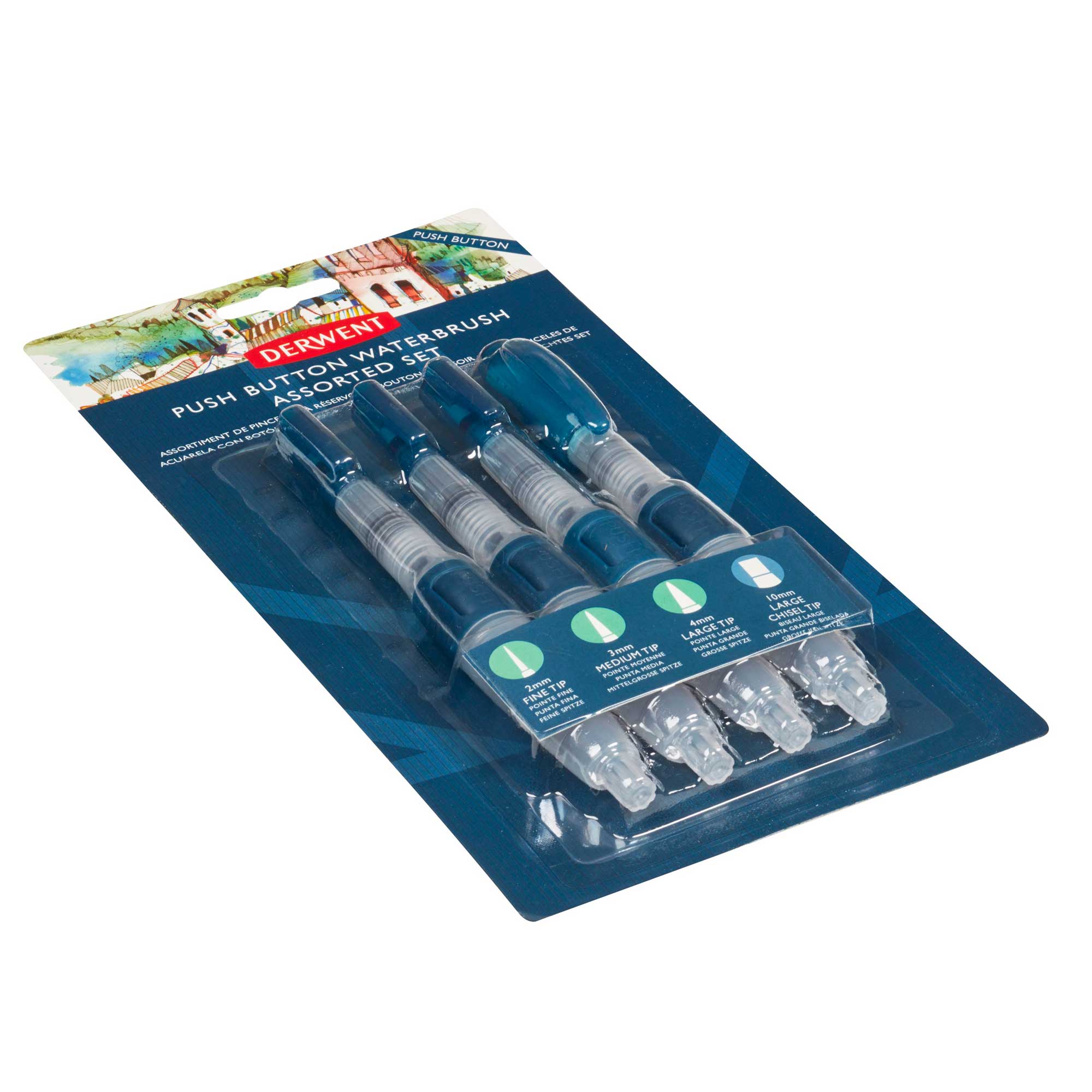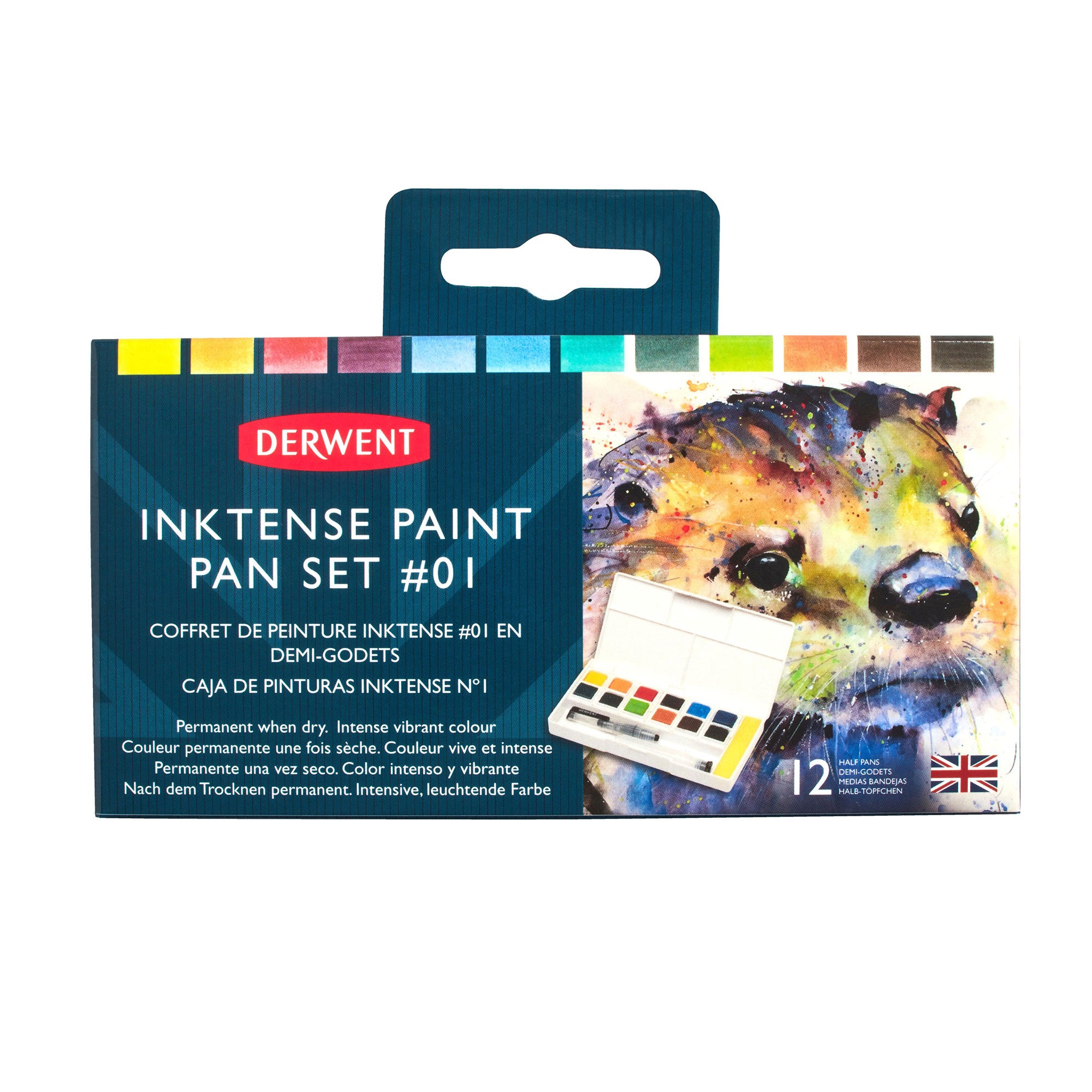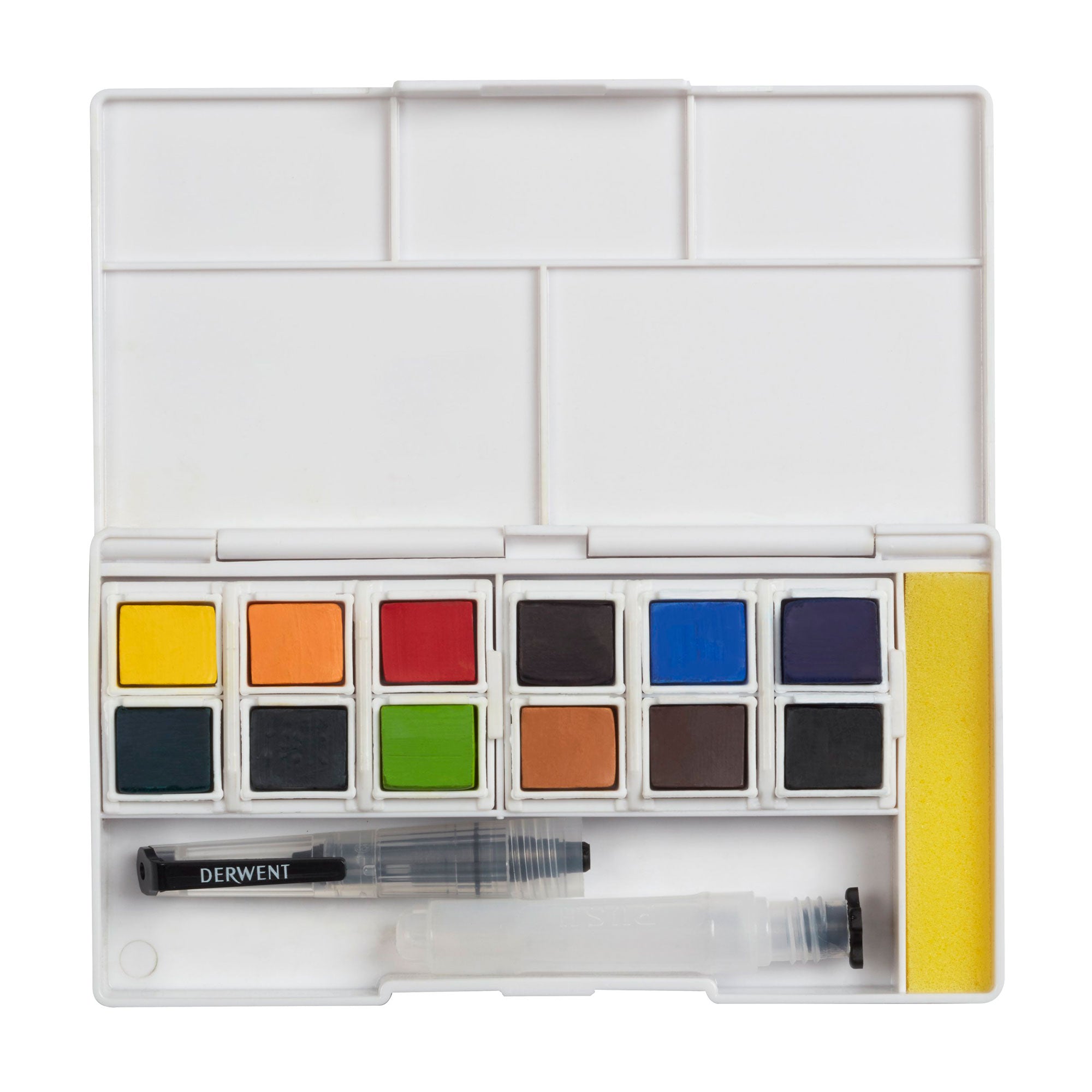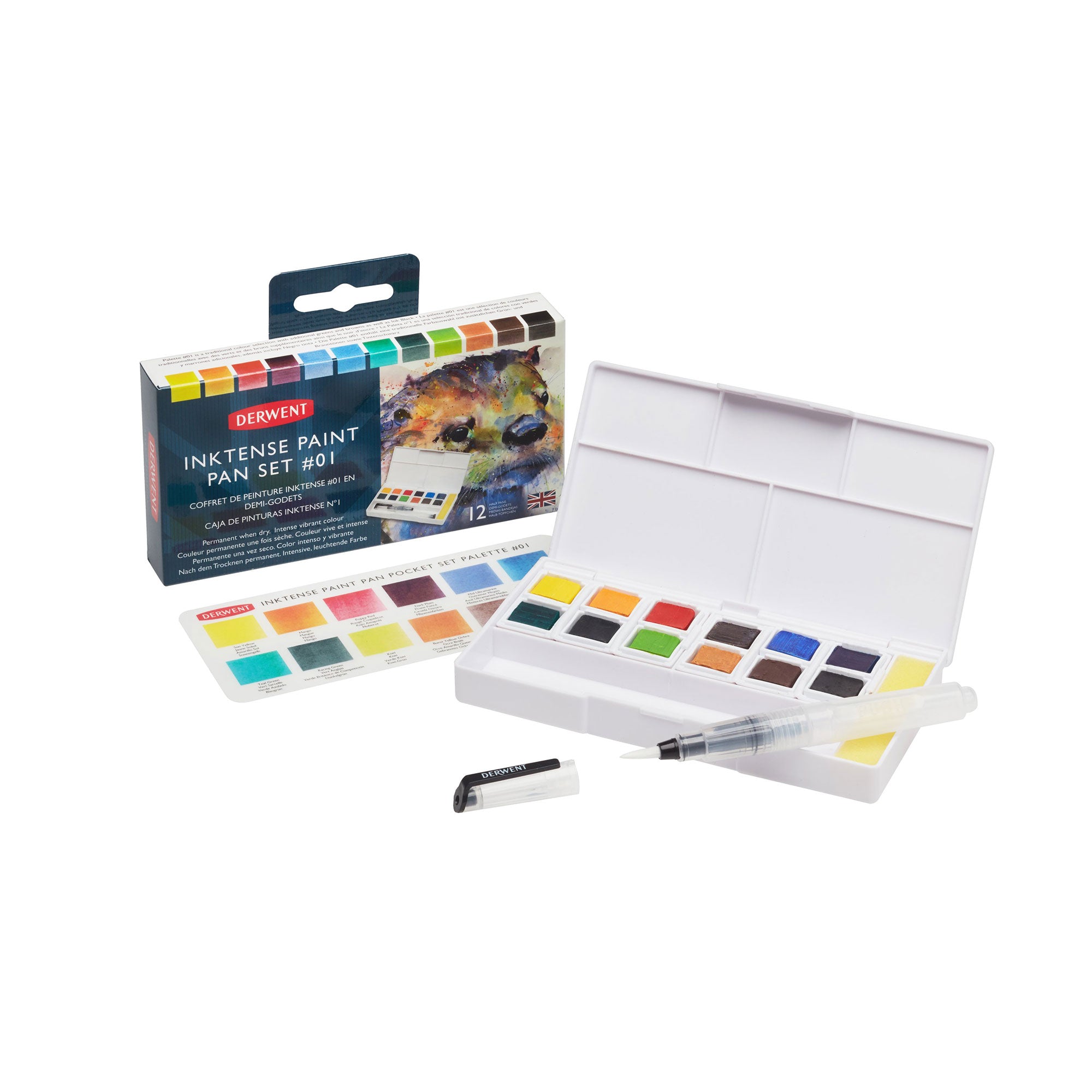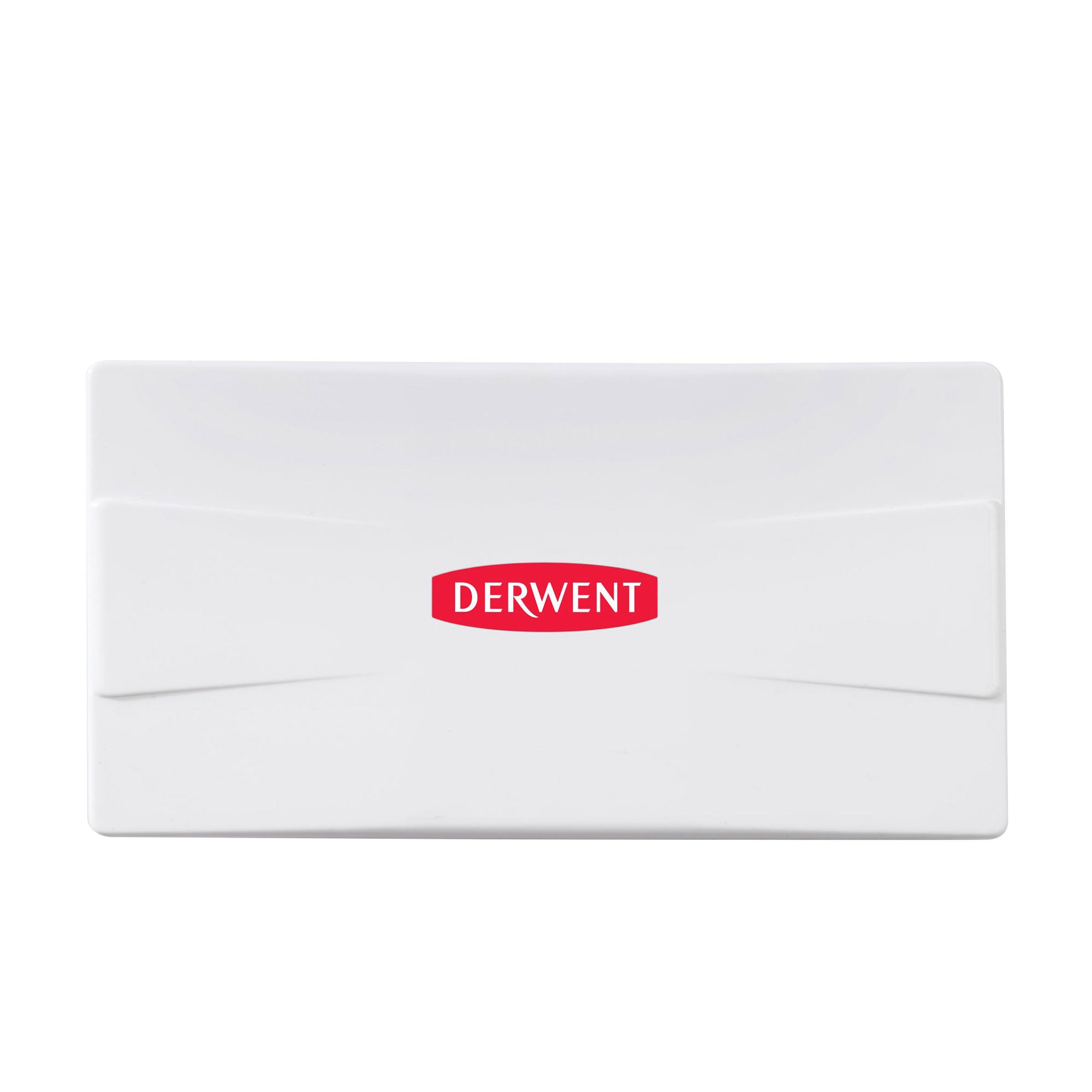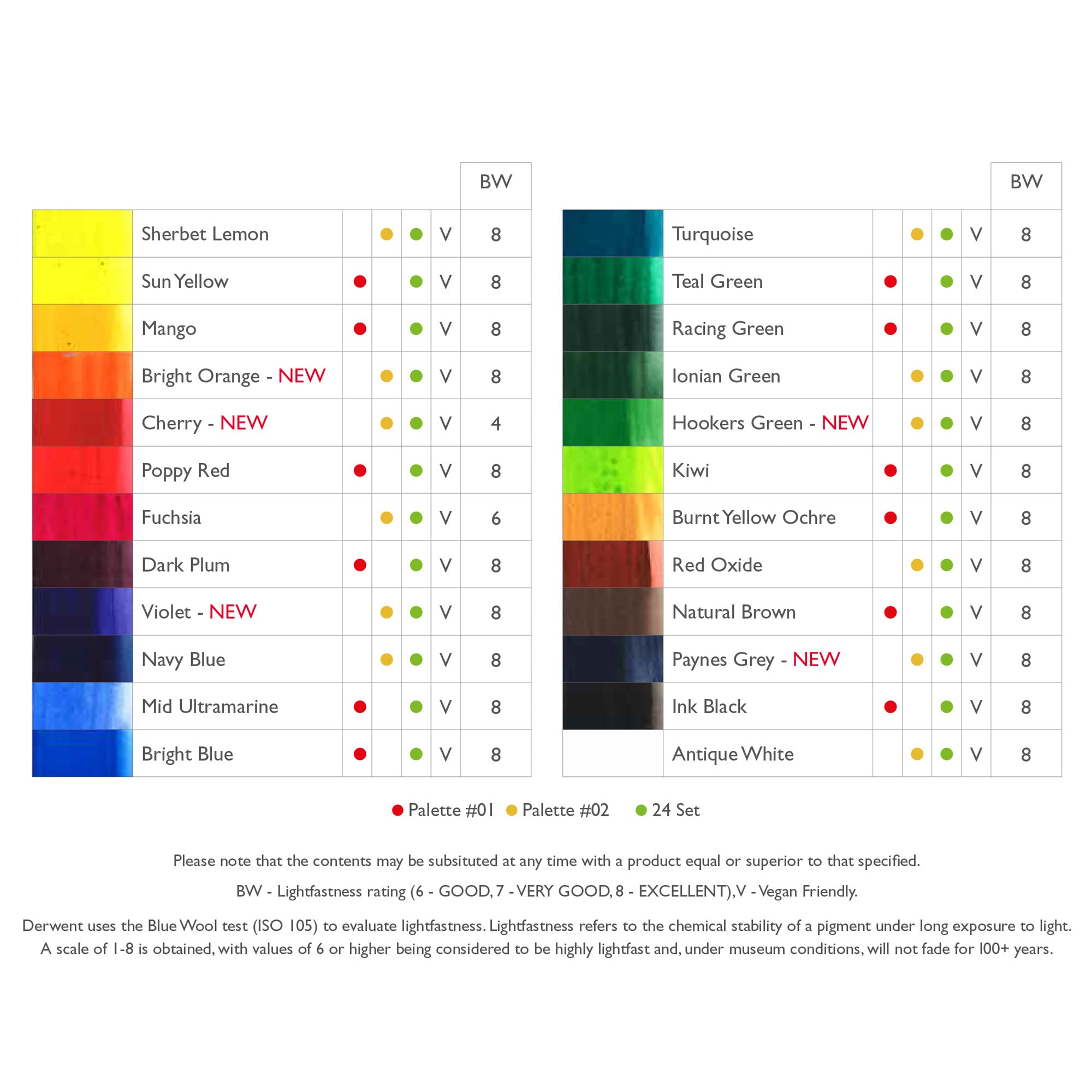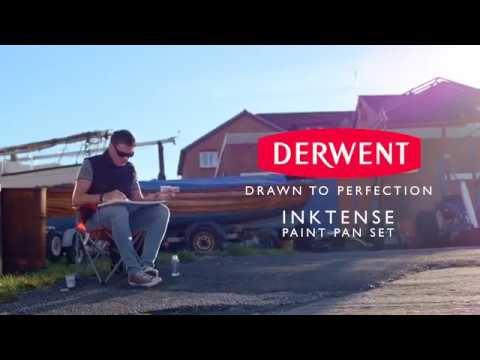Your Cart is Empty

Incredible Inktense!
Crafting and creating with Derwent Inktense blocks, paints and pencils on fabric.
PART ONE
Artists, quilters, crafters, embroiderers, and textile artists, assemble! Are you looking to add a burst of vibrant colour to your fabric projects? Look no further than Derwent Inktense pencils, paints and blocks! These innovative tools are a game-changer for fabric artists and crafters, offering a blend of vivid colours, ease of use, and permanent results that set them apart from traditional fabric dyes and paints.
In this blog, we’ll explore why Inktense pencils and blocks are an exceptional choice for bringing your fabric creations to life, whether you’re customising clothing, designing home décor, or crafting unique accessories. Join us as we dive into the vibrant world of Inktense and discover how these versatile tools can elevate your fabric art to new heights.
Firstly we will discuss why Inktense is a great choice for your textile projects, providing you with the best tips and advice for beginners. Then we will walk you through some great techniques you can learn and apply to your own work.
Q: Why use Inktense to colour your textile creations?
A: Derwent Inktense pencils, paints and blocks are popular choices for colouring fabric creations due to several key advantages:
- Vibrant colours: Inktense pencils and blocks are known for their intense, vibrant colours. When activated with water, or half water and half fabric medium, the pigments become even more vivid, providing a striking finish to fabric projects.
- Permanent when dry: One of the standout features of Inktense products is that, once activated and dried, the colour becomes permanent. This means that after you apply the colour and it dries, it won’t wash out, making them ideal for fabric that will be laundered (we would recommend a gentle wash or hand wash cycle, with no harsh detergents).
- Versatility: Inktense pencils and blocks can be used on a variety of fabrics, including cotton, silk, and synthetic blends. They can be applied directly to dry fabric and then activated with water, or half water and half fabric medium, or you can dip the pencil or block into water and apply it to the fabric for different effects. Especially effective for small illustrations and details.
- Blending and layering: The water-soluble nature of Inktense products allows for easy blending and layering of colours. You can create smooth gradients, detailed designs, and intricate patterns by combining and layering colours.
- Portability: Pencils and blocks are compact and portable, making them convenient for on-the-go projects or workshops. They are less messy than liquid dyes or paints, which is a significant advantage for many users.
- Multi-Purpose: Beyond fabric, Inktense pencils and blocks can also be used on paper and other surfaces, making them a versatile addition to any artist’s toolkit. This versatility can be particularly beneficial for mixed-media projects.
- Customisation: Using Inktense products allows for high levels of customisation. You can create personalised designs on clothing, accessories, and home décor items, giving your fabric creations a unique and professional look.
- Doesn’t change the feel of the fabric: whilst other fabric printing and painting medium can change the characteristics of the fabric once dried, Inktense remains soft to the touch. It doesn’t change the fabric’s handle at all or restrict the fabric’s ability to stretch.
- Easy to Use: These tools are user-friendly and require minimal additional equipment. You just need water or water and fabric medium and a brush to activate the pigments, making them convenient for both beginners and experienced fabric artists.
Before you start: tips and guidelines.
- White fabric works better than on a black or very dark fabric, as the colours really stand out and remain vibrant.
- Wash all fabrics first before using them for your project. This will ensure all starch or grease or any other sizing isn’t present before you start.
- Once washed, iron all fabric flat, with no creases, fold marks or wrinkles. This will ensure your designs go on easily without distortion.
- Swatch out all your colours on your chosen fabric. Some Inktense colours may dry a little bit lighter. Experiment with mixing colours in your palette or on your fabrics.
- To slow the spread of pigment just use the textile medium.
- For a medium spread of pigment use a mixture of textile medium and water, 50/50.
- Experiment with working dry pencils or blocks onto wet fabric for a completely vivid and pigmented effect, investigate using the paints on wet and dry fabric to monitor how fast or slow the paint spreads.
- Heat setting with an iron will speed up the painting process, by drying your work in between layers. Work more layers on top of the first application, wetting and heat setting each layer. This will ensure the Inktense is fixed to the fabric.
- Allow the fabric to dry completely, if using stitched embellishment. You can use a hairdryer to speed up the process if needed, especially on large pieces of fabric.
What you will need;
- 100% Cotton, 100% silk, works really well, however any blended or synthetic fabric will also work, but the colours may dry slightly lighter.
- Water brush, Derwent Waterbrush - Pack of 3
- Sponges (optional) Jakar Artists Natural Sea Sponges - Pack of 10.
- Water jars or water pots.
- Stiff Brushes
- Inktense blocks
- Inktense pencils
- Derwent Inktense Paint Pan Studio Set
- Winsor & Newton Fineliner Sepia Set of 3. Permanent fine liner for drawing out your motif if you have a detailed piece of work to colour.
- String, cotton or elastic bands for tie dye techniques
- Iron fabric onto freezer paper, this will keep fabric flat and stationary, or alternatively you can use masking tape to secure fabric onto our work table.
- Plastic cover to protect surfaces.
- Textile or fabric medium to wet out the small details of your motif.
- Paper towel for blotting.
- Latex or rubber gloves.
- Non food grater.
- Derwent Water Spritzer - Plastic Atomiser.
- Flat plate to use as a palette and a shallow tray for space dyeing fabric.
Techniques

Winsor & Newton Fineliner Sepia and Derwent Inktense pencils and Blocks on cotton fabric.
Working on dry fabric
Even a light touch of colour, once activated will provide a vivid and colourful outcome.
The most simple way to use the Inktense pencils and blocks is to directly draw onto the fabric whilst dry. You can either draw your motif onto the fabric first with a hard pencil, or a very fine permanent fine liner or go straight in with the pencils or blocks. Once you have completed your designs and coloured them, you can then activate the pigment with water or half water and half fabric medium or just medium. When applying the Inktense pencils or blocks to a motif, try to not to colour right up to the edge of the lines. Once activated the ink will spread on the fabric a little, right up to the line on its own. To ensure a good result, you can apply the water or just fabric medium or half water and half fabric medium mix with a stiff brush. A stiff brush will help to push the pigment into the fabric and the stiff brush will regulate to some extent how much dilution you can apply as it does not hold too much liquid. Too much water will result in a very diluted colour and a watercolour wash effect. If you have a small detailed area you wish to activate the colour, then fabric medium alone would work without too much spread.


Inktense watercolour pencils on cotton fabric
Working onto wet fabric
Working onto wet fabric will help the colours bleed and blend into the fabric and into each other. The effect is very much like watercolour washes. You can work in layers letting each layer dry before adding the next colour, or work all the colours together and with a stiff brush combing them on the fabric.
Working with a textile medium
When working with a textile medium because it is a thicker consistency it will allow you to work up to the edges of your motif and line work without it bleeding too much. It controls the bleeding of the colours once activated.
Working with just water
Water will activate the Inktense pencils and blocks but the pigment will travel much faster and be absorbed into the fabric resulting in more of a watercolour effect. There will be less control of the pigment if more water is used.
All the colours remain vibrant when using textile medium or water on the fabric.
Colour wash
Work dry block or pencil over dry fabric and then flood with water. Aim to use the side of the pencil or the side of the block to cover any large area, try to keep a light touch. If you use the edge of your block or the tip of your pencil it will leave sharp marks on the fabric which will not necessarily blur out, or give an even covering.
Then use a large stiff brush and work quickly over your fabric with water and this will activate the pigment and provide you with a lovely soft background.
You can also spray your fabric after laying down the colour and then use a large stiff brush to spread the pigment evenly into the fabric. This will create an effect similar to the colour wash of watercolours on paper.
Space dying pieces of fabric for quilting or textile art
Cotton, linen, gloves, plate, inktense blocks, water, a firm brush
Technique 1
Cut your fabric into your desired size. Wet the flat plate or covered plastic surface or an old basin.
Spray water into your tub or on your large plate or plastic tub and create 3 puddles. Use the side of your inktense block to create a variety of watery shades of pigment. Aim to use harmonious colours for an unmuddied result. For example use blues, purples and pinks, or blues, purples and a hint of green, or for a warm palette, reds, yellow and orange? Think about the proportion of colour you wish to be dominant or the proportion of colour you want as an accent.
Wet your fabric under warm water and squeeze it so it is damp then lay the fabric over the dye ink released by the Inktense blocks. We would recommend wearing a plastic apron and some protective gloves.
The wet fabric will quickly absorb the pigment and hopefully colour all the areas you wish to colour. Keep the fabric scrunched up and move around your dish until all the pigment has been absorbed into the fabric. If there are some white patches, just move your fabric around until they have all gone. If you need to create a deeper colour just wipe the XL Block over the wet fabric.
If you have areas where the pigment is too intense or blotchy, you can use your stiff brush to diffuse the build up and push it back into the wet fabric.


Technique 2
This technique is basically exactly the same as above but instead of laying a wet piece of fabric down you lay a dry fabric onto your flat plate or shallow plastic tray with Inktense pigment.
Move it around so you can cover all the areas you want to colour. This method of space dying will result in a more vivid palette. Dry fabric on the line making sure it doesn’t come into contact with any other fabric, then iron to secure the pigment is permanent when dry.

Wet space dyed cotton fabric

Dry space dyed cotton fabric
Creating a textured background, and stencilling with leaves
1Secure your fabric to your working surface. The fabric will become quite wet with pigments so we recommend you protect your surface with some plastic covering. Also wear protective gloves and an apron as Inktense will stain your hands and clothes.
2Collect a variety of leaves in different sizes. Glue them onto fabric using a glue stick. Aim to vary the orientation to create a scatter pattern effect. Using the glue stick will just keep them in place whilst colouring the fabric. If they curl a little this is ok. You don’t need to wait until the glue is dry.


3To create the texture, we grated a small amount of pigment powder from several Inktense coloured blocks and one XL block. Collect the pigment dust onto a piece of paper.
4You can use the dust to scatter straight onto the fabric or you can place some of the pigment dust into a spritzer bottle to make a coloured ink. This is great if you want to create your own unique colours.
We used both techniques to create our leaf design sample.

6Using a spray bottle filled with clean water, dampen the fabric and watch the pigment powder dissolve into the fabric. If you would like more of an even colour for your background you can dissolve the pigment powder in a little water, and using the spritzer cover all the white areas.
A stiff brush can also be used to push the pigment deeper into the fabric or used to blend the colours.
5Scatter the pigment powder directly onto the fabric and leaves. We used a teal green, iris blue and leaf green. Evenly distribute the pigment powder all over the fabric.

7Remove all the leaves and leave to dry before applying more colours to the white leaf shapes. To add details we used the Inktense pencils and the smaller Inktense blocks. The glue does act as a slight resist, which was perfect for this design.

8To create the leaves for this textile piece we use a range of warm hues using both Inktense pencils and blocks. Each colour was drawn onto dry fabric with a moderate pressure. Too much pressure would lead to too much pigment being used and for this piece we wanted the sharp edge to blend into the centre of the leaf. Pencils were used on the edge of the leaf shape and the blocks were used to slightly shade in the sections between the green veins.
Once the dry pencils and blocks had been drawn onto the fabric, a stiff damp brush then blended the colours on the cotton fabric.

9Continue to add detail to the fabric design until all the leaves have been completed. Finish your textile piece with a hot iron to seal in the colours. This could be used for quilting or for an embroidery piece?

Some of the Derwent Inktense products we used.
Fabric medium
Using a fabric medium with Inktense pencils enhances colour vibrancy, improves application, and ensures greater durability on fabric. To activate the Inktense pencil or block pigment you can use water on the fabric and this allows the Inktense vibrant pigments to bleed into each other or spread across your fabric in a wash. However if you want more control and to direct your pigment, you can use fabric medium instead of water. Fabric medium is more of a creamier consistency so when applied to your fabric it will not bleed or spread. We used Liquitex Fabric medium to create some of our samples, and it worked exceptionally well.
We hope this article has inspired you to use your Derwent Inktense products in a new and exciting way?
Please share your artistic creations on our social media: Instagram #colouringthenation.
Don’t forget to check out part two of our blog "Crafting and Creating with Derwent Inktense!"























